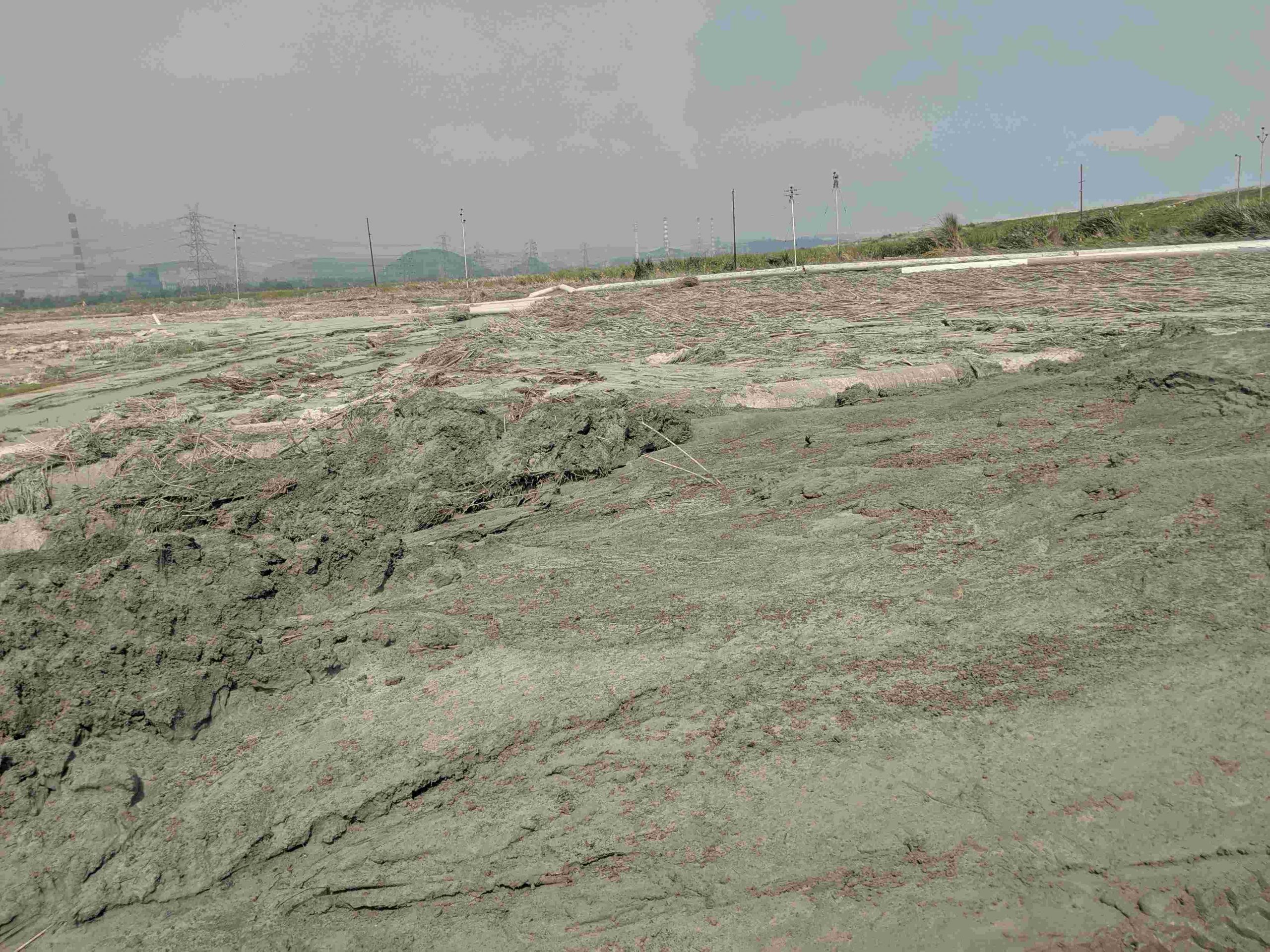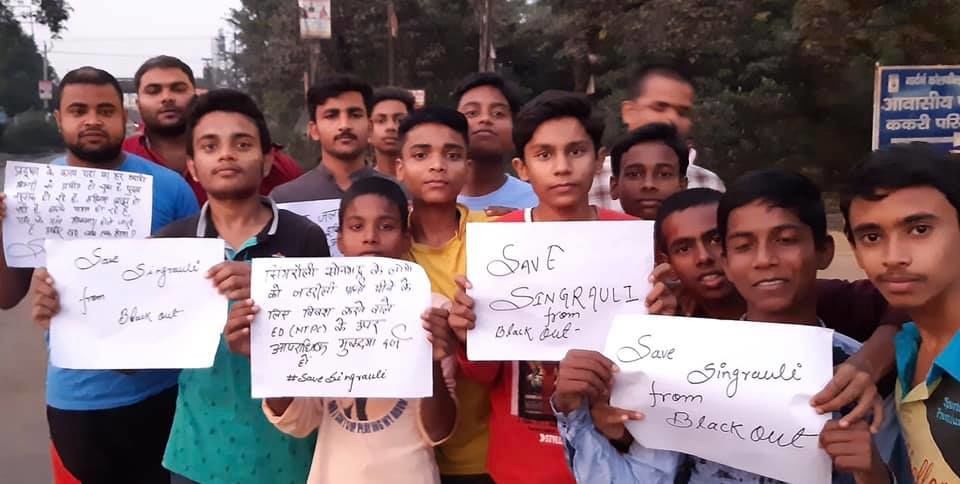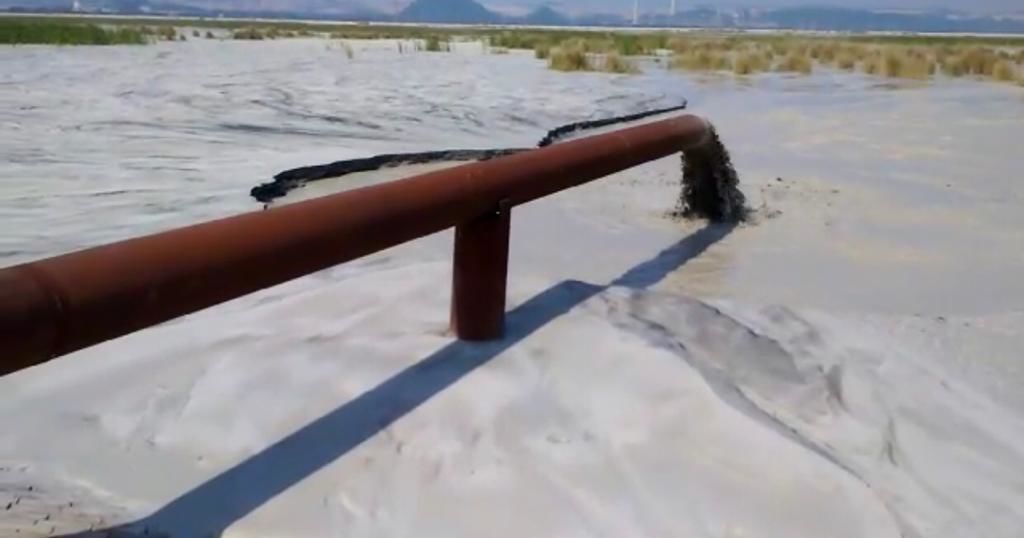The Rihand dam quenches the thirst of 20 lakh people, but these people are drinking toxic water
On Oct 6 last year, the dyke of a fly ash pond at a power plant of the NTPC in Singrauli in Madhya Pradesh breached, causing spillage in several acres of land. People living here are still suffering


“It was raining heavily that day. The wall, which was weak, collapsed at four in the evening. People living in nearby areas panicked. Many animals got washed away. The thud was so loud that we felt as if the dam itself had collapsed,” said Chitranjan Giri, a social worker from Shahpur village in Sonbhadra district in Uttar Pradesh.
On October 6, 2019, the dyke (boundary wall of a water body) of a fly ash pond at a power plant of the NTPC in Madhya Pradesh’s Singrauli district got breached, causing spillage in several acres of land.
After the dyke collapsed, fly ash – ash produced in small dark flecks by the burning of powdered coal – from the power plant spilled into the nearby Rihand dam, the largest dam in India by volume and located at Pipri in Sonbhadra district.
As a result, over 20 lakh people in Sonbhadra and Singrauli are drinking toxic water, which could possibly increase the risk of cancer.
This water is also flowing into fields damaging crops. When Rural Connection visited the dam, the reporter had to seek permission from the authorities to go near it as the movement of people had been restricted. The reporter found big chunks of fly ash still floating in the dam and workers trying to remove them.

“Fly ash causes asthma, TB, cancer”
According to the National Green Tribunal (NGT) – a statutory body set up in 2010 to handle environment-related cases – heavy minerals such as arsenic, silica, aluminium and iron present in fly ash can cause asthma, discomfort in lungs, tuberculosis (TB) and even cancer.
There are 10 coal-based power plants in Singrauli and Sonbhadra, located near the Uttar Pradesh-Madhya Pradesh border. Ashwani Kumar Dubey, an environment expert, who is also an advocate in the Supreme Court, said: “This particular power plant generates a total of 21,000 MW electricity. It consumes nearly 10.3-crore tonnes of coal per year. This produces nearly 3.5-crore tonnes of fly ash. There is no way to dispose of this fly ash.”
He added: “The NGT couldn’t find a place to dump this fly ash. As per its order, it was supposed to be disposed in the vacant fields of Northern Coalfields, a subsidiary of Coal India, which has its headquarters in Singrauli. But they did not wish to do it. The dyke collapsed because of fly ash, which was stored in bulk.”
Soon after the incident, many rallies and protests were organised. A petition has been filed against the NTPC in the high court. Chitranjan Giri, the social worker, said: “The air here is polluted. After this incident, people who used to drink water from the Rihand dam are too scared to consume it. We had informed the NTPC officials that fly ash is getting drained into the Rihand dam, but they didn’t take it seriously. This could have been stopped, but authorities were careless.”

The company said the situation was beyond control. “Soon after the dyke collapsed, debris started flowing. The situation was beyond anybody’s control,” said Lalmani Pandey, assistant manager at NTPC Vindhyachal. “There was a drain on the way because of which the fly ash got deposited in the Rihand reservoir. There was no loss of life, but NTPC Vindhyachal has suffered huge losses.” He said more than 50% of fly ash has been washed away due to the reservoir. Whatever is left is being removed, he said.
The Sonbhadra-Singrauli belt is prone to accidents. In August, five children were rescued and over 500 farmers in Madhya Pradesh suffered crop losses after a mud wall of a fly-ash dyke of Essar Energy’s thermal power plant in Singrauli collapsed during heavy rain.
RS Parihar, the regional officer of the Madhya Pradesh Pollution Control Board, said: “The recent tragedy is bigger than the Essar tragedy. The only source of water in the region has been affected. The dyke was very old, that’s the reason why it collapsed. Nearly 35 lakh metric tonnes of fly ash reached the Rihand dam through drains. This could harm nature in many ways. It could also affect groundwater.”
Environmental expert Ashwani Dubey, however, believes the quantity of fly ash was more than 35 lakh tonnes.”The maximum limit of the dyke is 35 lakh metric tonnes. The boundary of the dam was raised five times. This means about one crore metric tonnes of fly ash have got deposited in the Rihand reservoir.”

He added: “The Rihand dam, built over the Renuka river, is the only source of water for more than 20 lakh people in Sonbhadra and Singrauli. This river meets the Son river, which merges with the Ganga in the end. Imagine how dangerous the whole chain is. Future generations are going to suffer the consequences of this tragedy.”
According to the NGT, every megawatt of electricity generated using coal produces 1,800 tonnes of fly ash. In 1991-1992, about 0.3 million tonnes of ash were produced in India; it rose to 26.03 million tonnes in 2010-11, and about 120 million metric tonnes in 2016. As per the estimates, the number could go up to 150 million metric ton in 2020.
Ajay Chaturvedi, an environmentalist and founder of Paardarshi Bhaarat Civil Society, an NGO, told Rural Connection that minerals like silica, aluminium, boron, arsenic, calcium oxide, chromium, particulate matter (pm) 2.5 and black carbon are present in fly ash, making it toxic. These minerals pollute air over a 20 km radius. Fly ash also makes water bodies like rivers, drains and ponds toxic.
Narayan Vishvakarma, who has been fighting against illegal mining, deforestation, and increasing pollution in Singrauli, said: “When there were no dams here, the water table was low. After the construction of Rihand dam, the water level remained constant, but the water has turned toxic. The water from the dam does not reach people directly, but it’s used for irrigation.”
The National Green Tribunal, on October 11, 2019, had ordered coal mines as well as coal-based thermal power stations operating in the critically polluted Singrauli area to pay a fine of Rs 79 crore. But is this enough to compensate for such a large-scale problem?

